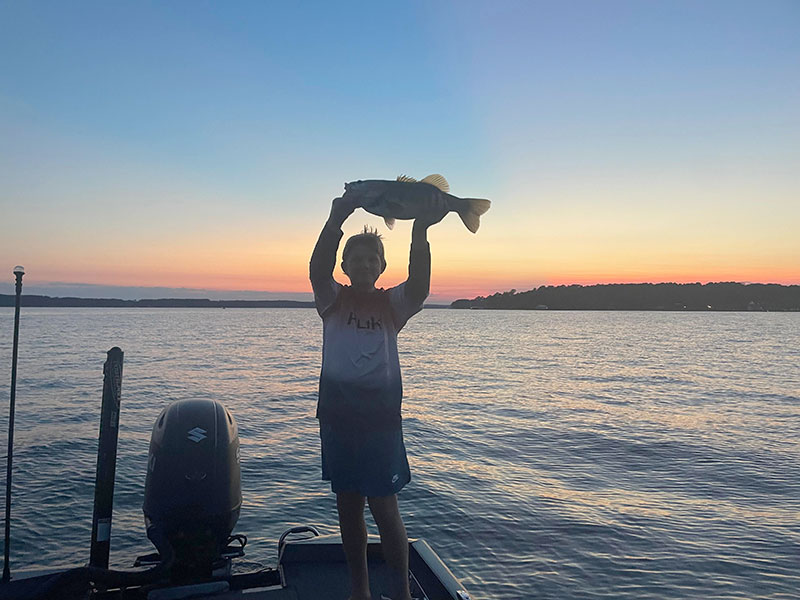
I don’t know about you, but all those sayings spouted so many times by so many for so many years must’ve come from Yankees. Take this one:
“March comes in like a lion and goes out like a lamb.”
Ha! Not here. Not in my Louisiana. March is a bear of a month.
Except for the last few days of a Conservation Order (on blue, snow and Ross’ geese), the hunting seasons are over.
And, when it comes to fishing all waters covering our beloved Sportsman’s Paradise, March goes through its lions-to-lamb scenario far too many times.
March is prime spawning time for largemouth bass, really all the bass species around here. That means you have to monitor lots of variables, things like sunlight, water temperature, rain, wind direction, barometric pressure and water clarity.
Win some, lose some
Of course, experience can guide through some of these obstacles, but just when everything looks like it is getting “right,” something always goes wrong, something like a late cold front, a weather system that turns a wonderful 72-degree afternoon into a rainy, bone-chilling, 34-degree next morning. There’s a calm afternoon with a beautiful sunset, followed the next day by wind and blowing rain so cold it should be sleet.
March is obviously a code word meaning time to get outdoors; or maybe not.
For years, the first of south Louisiana’s bass tournaments hit False River. The Atchafalaya Spillway usually was on the rise, and water in Verret Basin was on a continue recovery from the muddy conditions brought on by late-winter rains.
False River was stable most years, but pre-tournament scouting trips — those always promising excursions that left you with visions of a first-place stringer — were all-too-often flipped upside down by another visit from Old Man Winter’s brisk north winds and bite-killing bluebird skies.
Same’s true on Toledo Bend; January tournaments there brought the same pre-tournament excitement which always turned out to be more of an exer-cise in survival than a memorable fishing excursion.
Thank you, sac-a-lait
About the only thing we can count on is sac-a-lait, that wonderfully great-for-the-table species that moves to spawning beds much earlier than all their sunfish brethren. Bless their hearts!
Although the bite might slow on those first post-cold front days, a sac-a-lait’s urge to enhance their numbers overrides the inclinations of largemouth bass to button their lips and wait for more favorable spawning conditions. Whether you call them sac-a-lait, crappie or white perch, you know you can count on them.
Sure, sac-a-lait will delay — but not stop — their spawning activity, and you might have to hunt for them in more dense cover, but they will take a jig or a live shiner dangled in front of their noses when most bass have a case of lockjaw.
Yet, in March, we have to wait for the bluebill and chinquapin to work their way into the shallows. Water temperatures must get into the 70s for these fighters to heed the urge to spawn.
The lesson here is an old one: veteran panfishermen know pounding the banks for bream is a waste of time until pecan trees leaf out, because pecans are the latest of our deciduous trees to green up. It’s a signal the ground temperature is just right for the panfish to bunch up along banks of lakes, bayous, rivers and canals.
Coastal conundrum
March presents it’s share of problems and questions along the coast, too.
Speckled trout are ready to leave their wintertime haunts and move into the near-coast bays and lakes. It’s supposition whether this move is timed to coincide with the move of brown shrimp from offshore into our estuaries or if this migration is to set up for the upcoming late spring/summertime spawn.
No matter, this movement makes it tough to target trout and find them con-sistently. What few trout you might find one day won’t be the same place you can find a few the next.
Redfish and drum are a different story. Get a decent weather day, and you can find reds. Even when those pesky north winds blow, reds will gang up around a runout to feed on minnows and other tasty morsels fleeing from falling water in ponds.
It’s a risk a minnow has to take, to either get stranded high and dry or go with the flow and face voracious redfish and drum, and these smallish critters are willing to take that chance, albeit a small one of survival. If you’ve been a witness to these feeding sprees, then you can testify to a minnow’s somewhat small chance of running this gauntlet.
But you know what? March is a good chance to use those lion-like days to get your gear ready and hone your skills for what usually is April’s bounty.
We just have to wait March out, and, most years, the wait is darned well worth it.